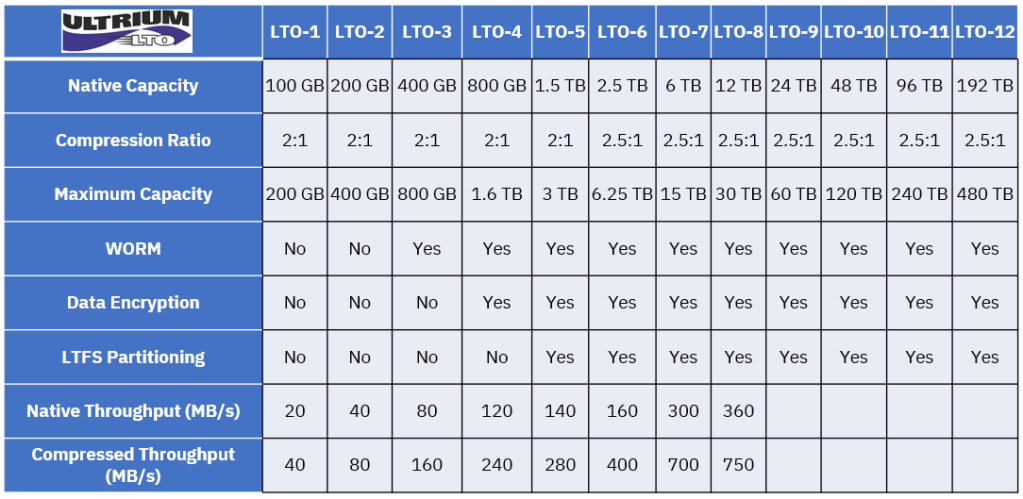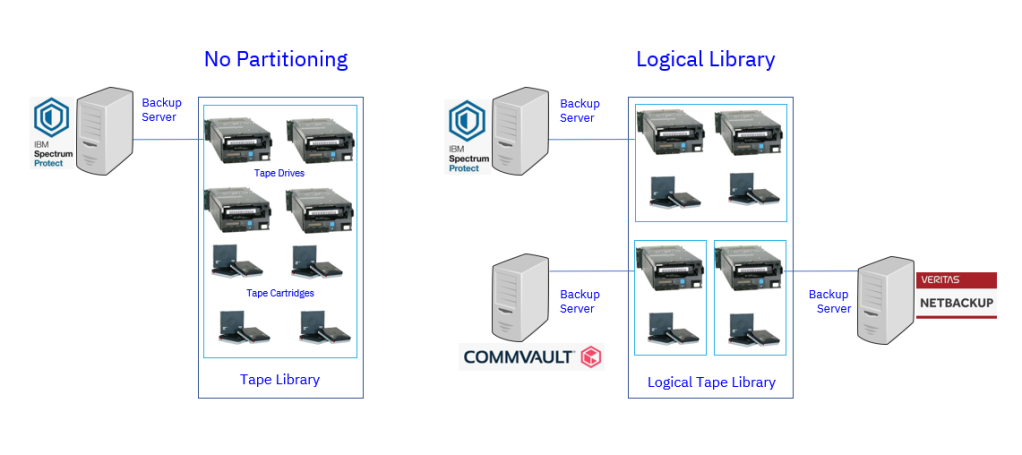Honored to be a part of vExpert directory once again..!
https://vexpert.vmware.com/directory/5268

https://www.olcf.ornl.gov/summit/
Summit Virtual Tour: https://my.matterport.com/show/?m=iBfbj7ET4LT
Many of us feels Tape is dead; Actually, tape usage is increased drastically these days. Larger CSPs, Enterprises use tape technology for their long-term data retention requirements today. With the increase in tape density, customers can store Peta Byte’s of data with smaller tape footprint and can achieve better economics / TCO over disk based solutions.
With the arrival of LTO-8, 360MB/s of tape drive throughput is far better than WAN connected Cloud Storage Containers / Object Storage Buckets when comes to Backup & Restore operations.
Tape is always considered as an “Air Gap” solution which can prevent the data loss from cyber attacks & security threats.

Linear Tape-Open is an open tape format developed by below LTO Consortium members,
1. IBM
2. Hewlett Packard Enterprise (HPE)
3. Quantum
Please find the below LTO generations,

At present, LTO-8 is being used in today’s backup platforms and tape technology has a stronger focus and future roadmap
LTO Future Roadmap:
> LTO-9 > LTO-10 > LTO-11 > LTO-12
Tape has below rich feature-sets over the years of development,
1. WORM (Write Once Read Many): will ensure the tape data is not overwritten/deleted/modified; Data can be written only once & can read as many times as required. Clients uses WORM media for their compliance and regulatory requirements.
2. Encryption: AES 256-bit encryption improves security
3. LTFS Partitioning: Linear Tape File System improves space management
Media Verification:
It is a scheduled process to verify the tape media /cartridge and ensure the data can be read from it. For larger tape library install base, at least one or two tape drives dedicated exclusively to tape verification
Encryption:
Encryption can be done in two ways,
IBM Spectrum Archive:
IBM Spectrum Archive solution can give us the capability of mounting an Automated Tape Library (irrespective of no.of tape drives installed) as a Driver Letter (for instance, Windows Server). So that, we can read and write the data to tape media without having an Enterprise grade backup application. With Spectrum Archive, we can simply drag & drop the files inside a cartridge as good as using an USB stick and perform a file move

Logical Tape Library:
Logical tape libraries used to partition a physical library into few logical portion. For instance, in a service provider environment, CSPs host multi-tenants in backup infra. Some of the client may have preference to one Backup Application (IBM Spectrum Protect) and few may be using (Commvault) and few of them prefers NetBackup. In this case, we can create 3 logical tape libraries and assign tape drives & cartridges based on the requirement. Each Backup application will see the logical library as dedicated physical library for that infra.


| Parameter | Open System | IBM z System (Mainframe) |
| Storage Type | FBA (Fixed Block Architecture) | CKD (Count Key Data) |
| Connectivity | Fibre Channel/SCSI etc | ESCON/FICON |
| Character sets | ASCII | EBCDIC |
| Extent Size | 16 MiB, 1GiB | 21 cylinders (or) 1113 cylinders |
| Base | Used by many OEMs | IBM proprietary |
Note: Whether Flash or HDD, it’s still an emulated track for zOS or FB environments